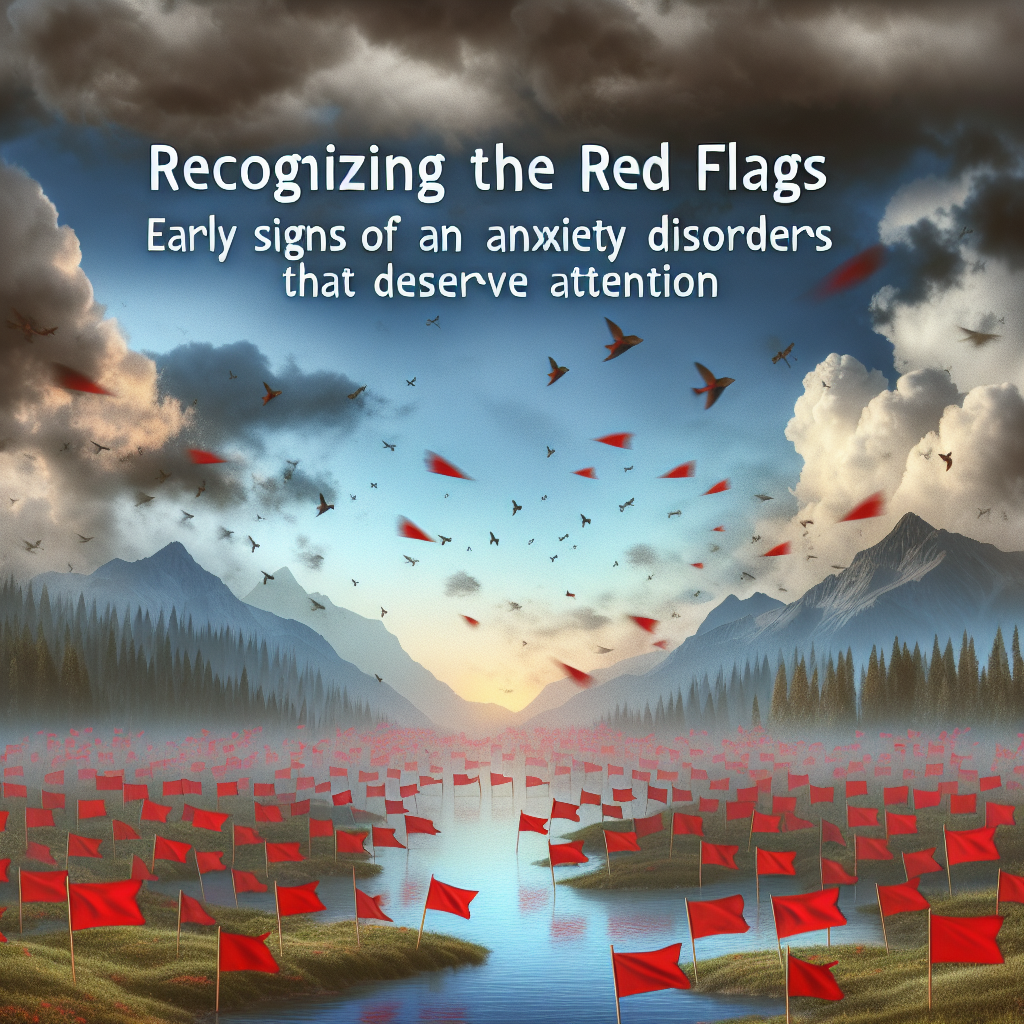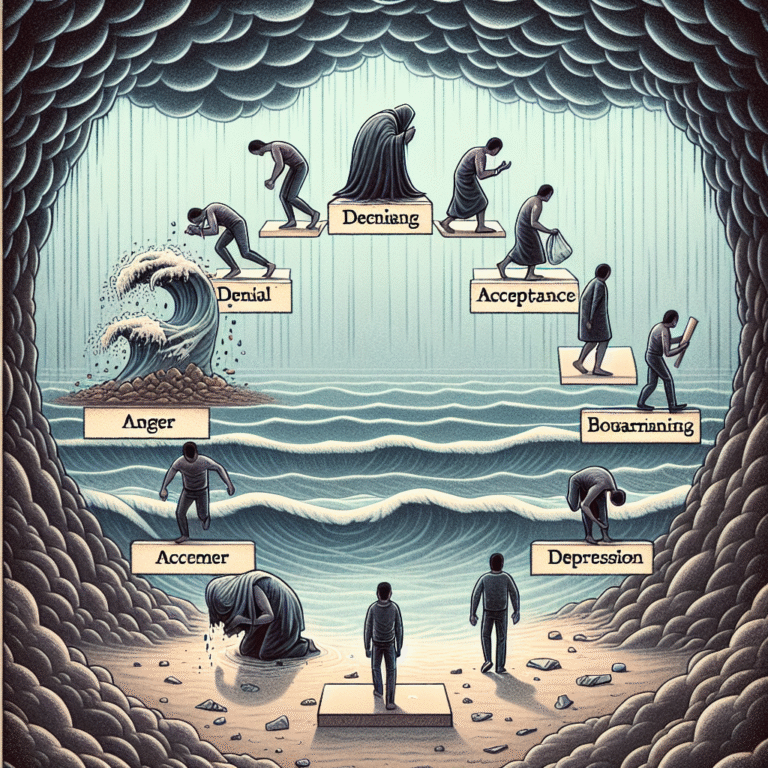
Recognizing the Red Flags: Early Signs of Anxiety Disorders That Deserve Attention
Introduction
In a world that seems to move faster every day, anxiety has become an all-too-common companion for many. But what if you could spot the signs before they spiral out of control? Recognizing the Red Flags: Early Signs of Anxiety Disorders That Deserve Attention not only empowers individuals to identify their struggles but also paves the way for timely interventions. In this article, we delve deep into the nuances of anxiety disorders, sharing unique insights, relatable case studies, and impactful strategies to foster understanding and encourage proactive care.
Understanding Anxiety Disorders
What Are Anxiety Disorders?
Anxiety disorders encompass a range of mental health conditions characterized by excessive fear or worry. Individuals may experience symptoms that are both psychological and physical, including racing thoughts, irritability, restlessness, and even physical symptoms like a racing heartbeat or sweating. Recognizing the red flags early can be crucial.
Types of Anxiety Disorders
There are several types of anxiety disorders, including:
- Generalized Anxiety Disorder (GAD): Characterized by chronic worry about various aspects of life.
- Panic Disorder: Involves recurrent panic attacks that lead to significant distress.
- Social Anxiety Disorder: A fear of social situations that can limit one’s day-to-day life.
- Specific Phobias: Intense fear related to specific objects or situations.
Recognizing the red flags: early signs of anxiety disorders that deserve attention can guide both individuals and their loved ones toward a more proactive approach.
Early Signs: What to Look For
Emotional Symptoms
- Persistent Worry: Does the individual continuously dwell on potential outcomes, even in low-stakes situations?
- Irritability: Are they frequently on edge or easily agitated?
Physical Symptoms
- Sleep Disruptions: Difficulty falling asleep or experiencing restless nights may hint at underlying anxiety.
- Increased Heart Rate: A noticeable uptick in heart rate during normal activities can be a significant red flag.
Behavioral Changes
- Avoidance: Begin to recognize avoidance behavior: are they consistently steering clear of situations that make them uncomfortable?
- Social Withdrawal: Look for signs of an individual pulling away from social situations they once enjoyed.
Case Studies: Real-World Applications
Case Study: Sarah’s Social Anxiety
Background: Sarah, a 29-year-old marketing professional, had always been outgoing. However, over the past year, she noticed an overwhelming fear of public speaking that led her to decline job promotions.
Analysis: Sarah’s case illustrates the importance of recognizing how specific fears can evolve into broader anxiety disorders. By acknowledging her red flags, she sought therapy and gradually confronted her fears, enabling her to regain her confidence and embrace opportunities.
Case Study: Tom’s Generalized Anxiety Disorder
Background: Tom, a 35-year-old father of two, was constantly worried about his children’s future, finances, and job stability. His typical daily stress morphed into obsessive thoughts that affected his work and home life.
Analysis: This scenario emphasizes the point that everyday worries can escalate. Recognizing these early signs of anxiety disorders allowed Tom to pursue cognitive behavioral therapy, which helped manage his anxious thoughts effectively.
The Role of Support Systems
Importance of Communication
Encouraging open dialogue about anxiety can be immensely beneficial. Here are some strategies for fostering supportive conversations:
- Active Listening: Validate feelings without judgment.
- Empathy: Share experiences to create a sense of connection.
Involving Professionals
Proactive care involves seeking help from mental health professionals. Early intervention can be transformative, leading to better outcomes.
| Approach | Benefits |
|---|---|
| Therapy | Offers coping strategies and personalized care. |
| Support Groups | Facilitates connection with those facing similar challenges. |
| Medication | Can help regulate symptoms when necessary. |
Tools and Techniques for Managing Anxiety
Mindfulness and Relaxation Techniques
- Deep Breathing: A simple yet powerful technique to help calm the mind.
- Meditation: Regular practice can enhance emotional regulation.
Lifestyle Adjustments
- Exercise: Physical activity releases endorphins, which can alleviate anxiety.
- Nutrition: A balanced diet plays a critical role in mental health.
Recognizing Triggers
Identifying personal triggers can empower individuals to prepare for potential anxiety-inducing situations. Journaling can be helpful for tracking symptoms and triggers over time.
Conclusion
Recognizing the Red Flags: Early Signs of Anxiety Disorders That Deserve Attention is the first step toward taking control of your mental health. By staying attuned to emotional, physical, and behavioral symptoms, individuals can foster a proactive approach to anxiety.
Final Insights
The journey to managing anxiety may not be straightforward, but it is undeniably worth it. With understanding, support, and the right strategies, recovery is within reach.
FAQs
1. What are the first signs of anxiety disorders?
The first signs often include persistent worrying, irritability, sleep difficulties, and changes in social behavior.
2. How can I support someone showing signs of anxiety?
Listen actively, provide encouragement, and suggest seeking professional help.
3. When should I seek professional help?
If anxiety persists for more than a few weeks and interferes with daily life, it’s time to consult a mental health professional.
4. Are there any lifestyle changes that help reduce anxiety?
Regular exercise, balanced nutrition, and practicing mindfulness can significantly improve anxiety levels.
5. Can anxiety disorders be effectively treated?
Yes, with the right combination of therapy, support, and sometimes medication, many individuals successfully manage their anxiety disorders.
By understanding and recognizing the red flags: early signs of anxiety disorders that deserve attention, we can cultivate a culture of awareness and empathy. By empowering yourself and others with knowledge and support, you create a brighter path toward mental well-being.











